
Of course the photo I want is sitting in a “to be scanned” pile back in Tokyo, while I am sitting in a relatively warm and sunny Florida, so I’ll have to settle for the dining room of Mari Ann and Michael Maher’s Llewellyn Park home, but I wish I could have the kitchen too. Their house, featured in the July 2007 Elle Decor remains my touchstone of the perfect family home, and I have shown the living room here before. I wish the Elle Decor online photos were as complete as the magazine – they lack the exterior in addition to the kitchen and perhaps a few others. The house is beautifully historical, gorgeously but comfortably furnished, with a feeling that every space is used and used well. I can think of no better spot than this dining room for Christmas dinner. But what I really want to focus on is that collection of transferware straight back in the cabinet against the wall. I know the photo of the kitchen has some hanging on the walls too, so it may be irresistible to add it when I get back to Tokyo after the New Year.

English Staffordshire dishes, routinely called transferware, have been on my mind a lot lately. To basically quote myself, “transfer printing was invented in England in 1756 and developed as an inexpensive way to recreate the characteristics of the hand painted underglaze blue ceramics of China and Japan. Ironically, transfer printing does not become popular in Japan until the late 19th century, but modern-day markets abound with transfer printed pieces that show it eventually did.” These Japanese transfer printed pieces, referred to as inban, are one of the absolute bargains to be found at almost any shrine sale or antique show.
English transferware was predominantly blue and white, but red, brown, black, yellow, purple and green were also made, particularly for export as well as much brown in the later 19th century aesthetic pieces.
In Japan, 90% of the printed inban is blue and white, and easily mixed and matched. I often push clients towards them as an alternative to the modern inexpensive dishes found at those large discount outlets. But much rarer than the blue and white, thus making them more fun to collect, are the green and white pieces, perfect for Christmas dining tables right now, but also for everyday use. Already having an extensive lavender and white English transferware collection, carefully brought with me to Japan, I have forced myself to limit my green and white collection to photos only, but find it increasingly hard not to buy. So for a little holiday season cheer, I’ll share my collection and let you all imagine how you might have added these items to your tables, hutches, cabinets or displays.
I think I’ll start with this one, just because the pattern reminds me of a snowflake and seems that much more seasonal.
Butterflies are pretty and a bit special.
Casual chrysanthemum laid over a karakusa background.
A little sho-chiku-bai (pine-bamboo-plum), our classic three friends of winter.
Sakura, or cherry blossom is common…
…as you can see, along with its sister ume (plum). Confused about bai and ume being the same thing? They are the same kanji, just different readings. Remember me mentioning I needed to work on my kanji – that is why I don’t make any progress!
There is a bit of every pattern hidden in these plates. And be sure to remember this bird and flower motif for the very end of the post.
You could think of these as tiny little Christmas trees.
I know there has to be a full story behind this plate – Chinese zodiac maybe? – but I am too lazy to look closely at it right now.
Some basho (banana leaves) in a star-like shape and goldfish swimming in the river.
When you consider how influenced late 19th century English transferware was by Japanese design, it is fun to think about mixing the two! Look closely at the border of the Cashmere pattern platter below from Merlin Antiques and compare the small stylized patterns to those in the Japanese pieces above. Then compare the bird and floral images with those in the plates a few photos above…
Happy Holidays to all!!!!
Related Posts:
Shop Talk…A Great Eye at Les Yeux Noirs
Sho-Chiku-Bai…The Three Friends of Winter: Pine, Bamboo and Plum
Image credits: 1. Elle Decor July 2007, photo credit: William Abranowicz, 2-3 Martha Stewart Living November 1995, last photo via Merlin Antiques, all additional photos by me.




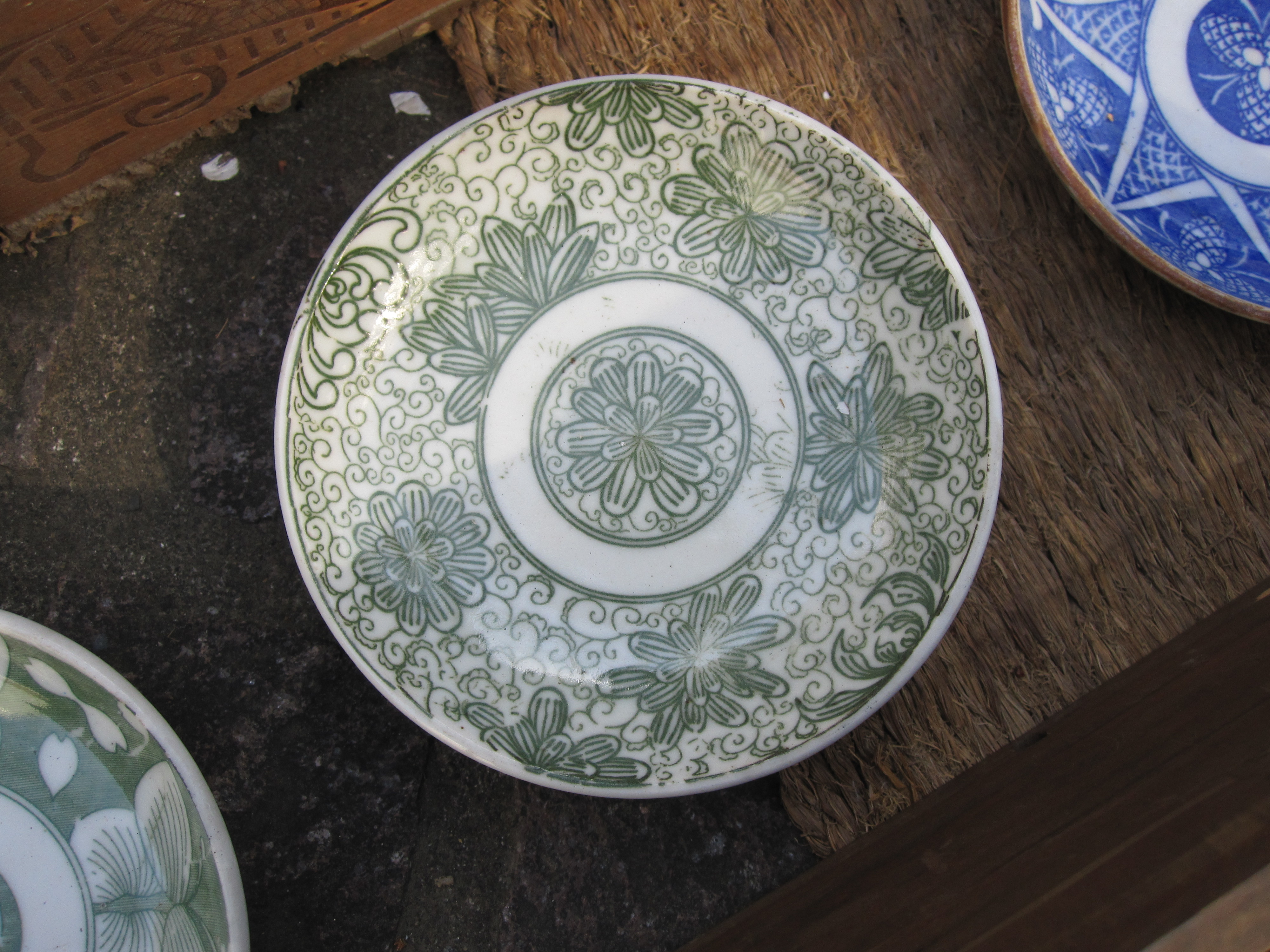
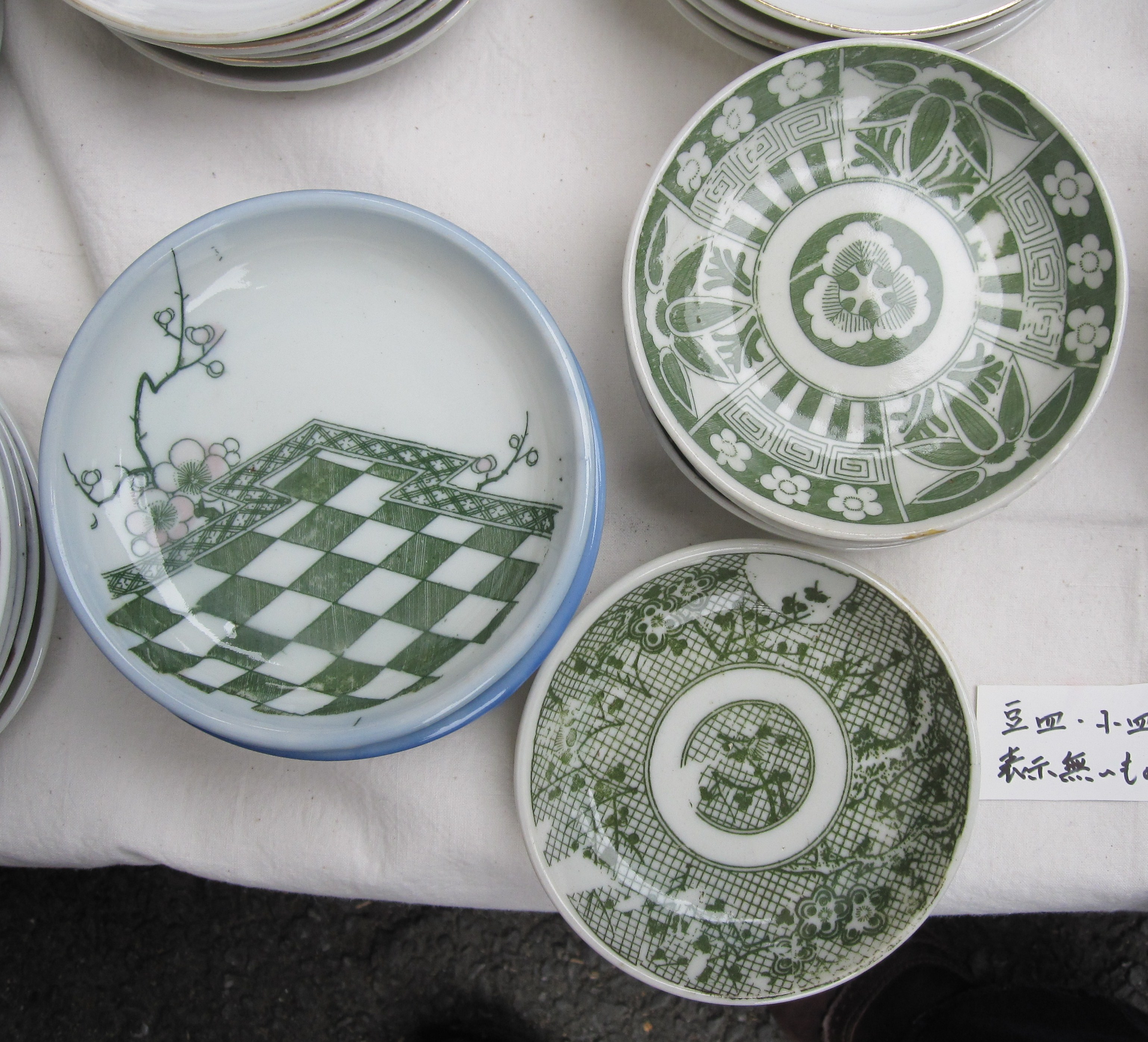
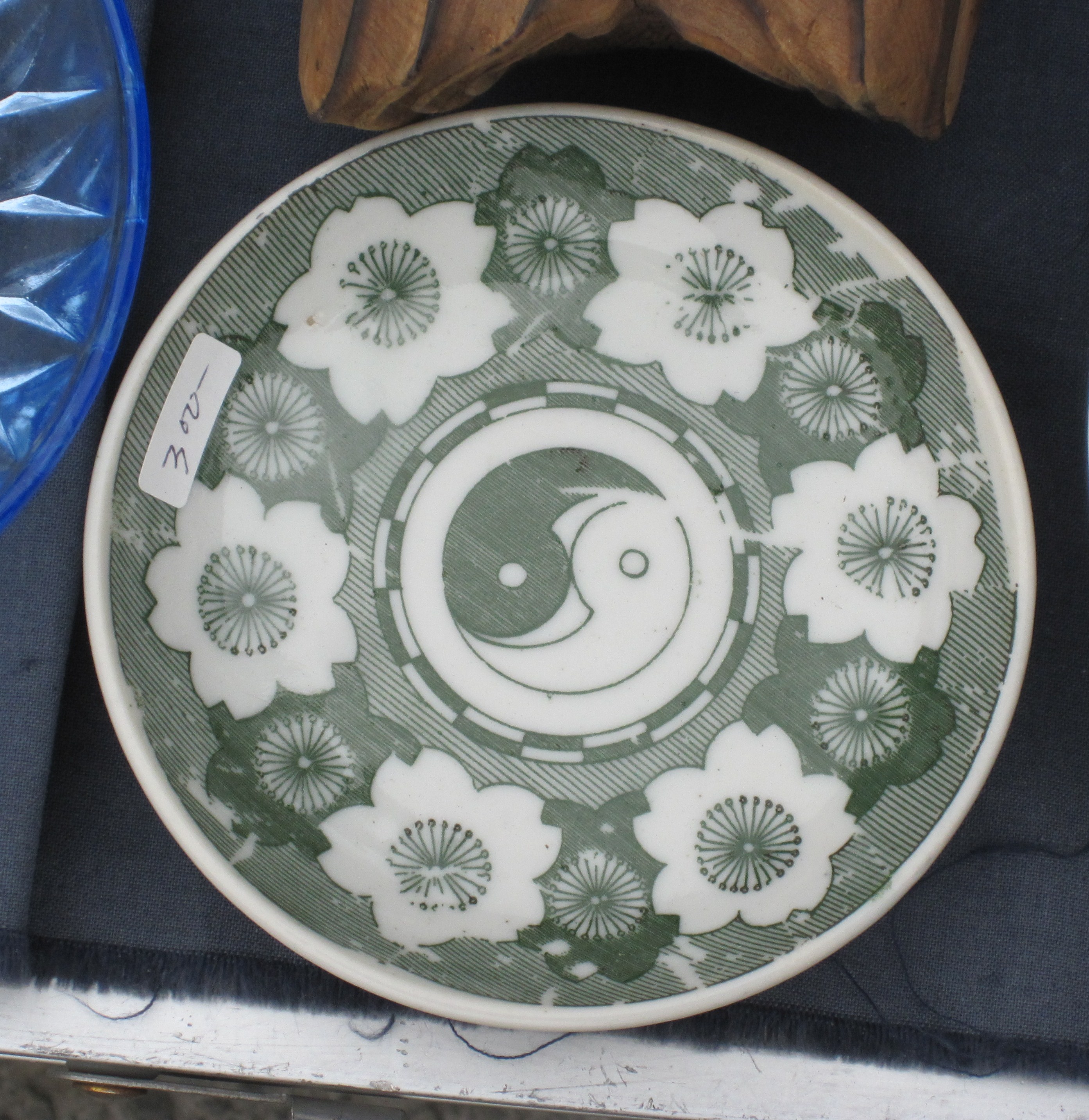


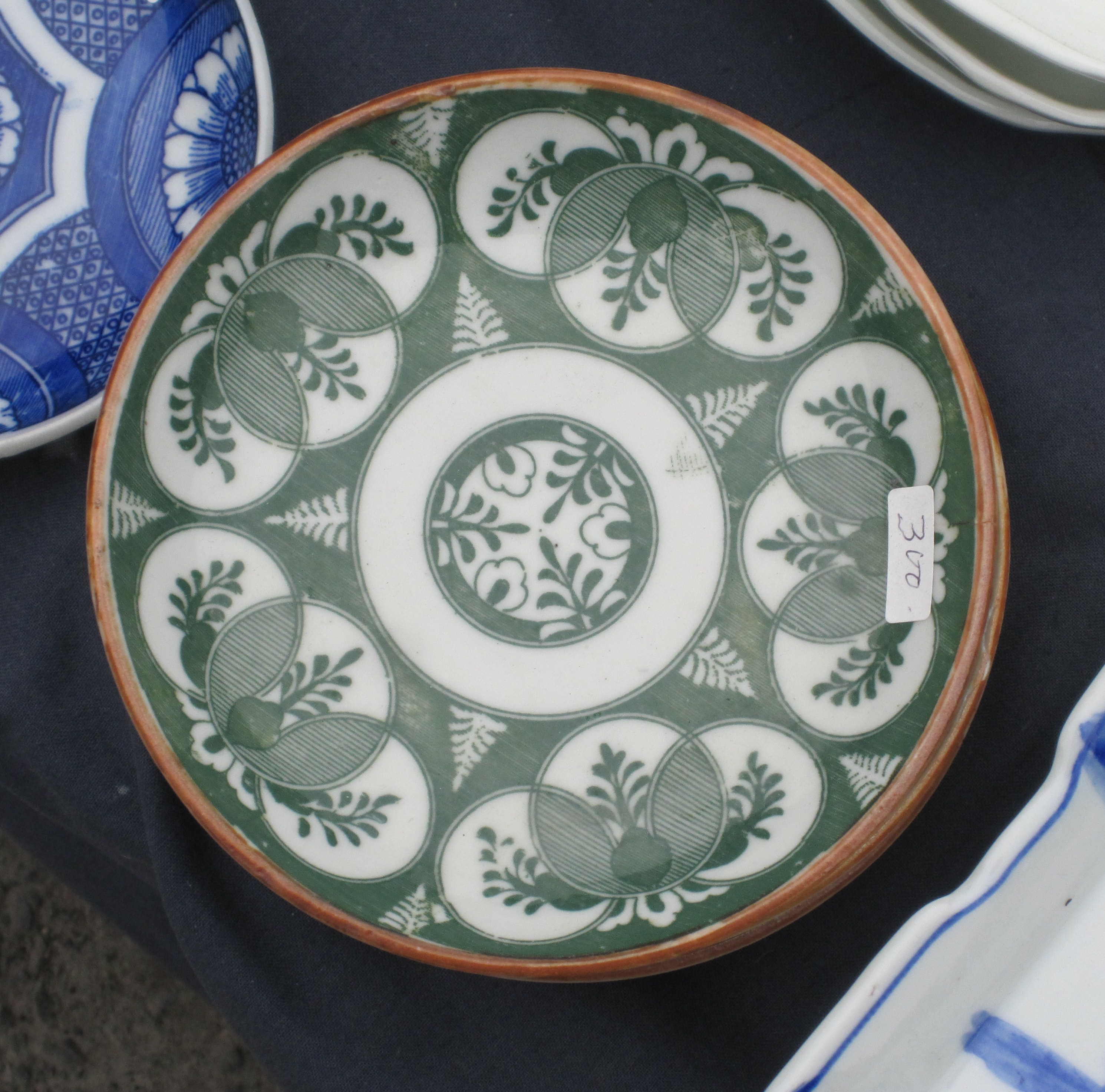


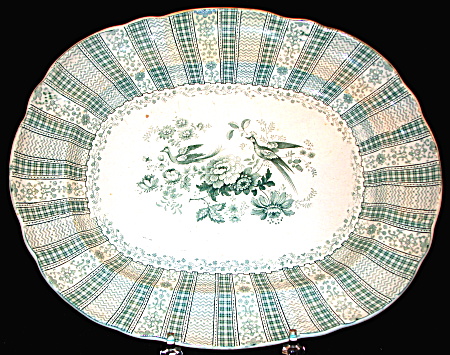
Hi! I have bad news about the pink lustreware cups you saw on my blog (all sold) but the good news is I have a new cup going to be listed in the new year and I know where I can get more just like them! Let me know if you are interested. The link below is the post in my blog where I have shown a photo of it. They are handle – less.
http://www.bellarosaantiques.blogspot.com/2011/12/yes-jillian-there-really-is-santa-claus.html
I’m such a green girl, I’ll take them all, please!!!
Well let’s start buying them for you – I am dying to spend someone else’s money on them!
________________________________
I love the green and white snowflake dish!!! After so many years in Japan, I finally started my collection of blue and white. Tried hard to resist but don’t know what happened this year! Fell in love through time, I guess.
Pretty hard stuff to resist….and why bother to anyway??
________________________________
Love the festiveness of the green & white. Hmmm, seems like a fun & inexpensive item to start collecting! By the way, viewing your blog on the IPAD for the first time & it looks so cool!
Thanks! The format is so amazing – I have WordPress to thank for that!